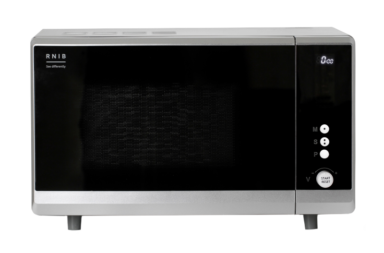Motoring is far from the exclusive preserve of able-bodied motorists. Nevertheless, disabled people are sometimes surprised or unaware of the clever solutions that enable them to get behind the wheel.
Hand controls
Most adaptive cars will have automatic gear transmission so there’ll be no need to operate a clutch pedal but this still leaves the brake and the accelerator to think about. For people with impaired leg functions this is primarily where hand controls come into play. The mechanism is relatively straightforward and links a paddle (attached to the steering wheel) by rod to the pedal workings. Such mechanisms used to be quite obtrusive and cut down on the space that drivers had but these days they are likely to be integrated into the steering column, not only making them neater but also safer in the event of an accident.
There are a number of hand control layouts available which mean that people can drive whilst using just one hand to control the vehicle.
Transfer Board
This is a very low tech solution that helps wheelchair users to slide themselves into the car seat (as driver or passenger). The transfer can usually be done solo as it’s a fairly simple manoeuvre. Transfer boards have a low friction, sliding surface allowing easy movement across them.
Swivel Pads
Although specialised swivel seats are extremely useful, some disabled people save themselves money by purchasing a simple swivel pad. A swivel pad is usually a low friction piece of material that when placed on the car seat allows people to swivel themselves into position. The idea is so simple that sometimes a slippery, plastic bag will suffice. Swivel pads can also be made up of two pieces of material that act as a turntable with similar results. In each case they must be pulled out before getting underway since they may cause drivers to slip out of position whilst the vehicle is in motion.
Swivel Seats
Transferring from a wheelchair into a car seat can be made much easier by using a specialised swivel seat. There are several different types available from those that simply turn 90 degrees to those that come right out of the car and lift the user to their feet or lowered to a wheelchair if you’re using a vehicle with a high seating position – and they can be mechanical (powered by hand) or electronic. Some can be programmed to use a route that avoids the roof and door pillars and slides back to enable the user to swivel legs into position with less difficulty.
Easy Release Hand Brakes
Steering isn’t necessarily difficult for people with arthritic conditions or limited dexterity but operating a traditional button release handbrake might be. Easy release levers simply apply more leverage and are usually operated by a T-grip handle. The T-grip presses the button on the hand brake as it is lifted into position. These are easy to fit to most vehicles and can be removed for vehicle re-sale purposes, even though they are essentially universal, meaning that any driver with hand function could use one.
Kick Sensor
The kick sensor is not strictly a driving aid but will definitely help if you need to stow kit or shopping into the boot. Two sensors are used to detect when the user swipes either their foot or other object under the tail of the vehicle (and directly behind it at the same time). The boot automatically opens to a programmable height, meaning that you can reach it to pull it closed again. (Two sensors are used to prevent the liftgate opening accidentally.)
Wheelchair Hoists & Storage
Wheelchair users might worry over the conundrum of what to do once they’ve transferred from wheelchair to car seat. Unless they have somebody with them who will help them stow their wheelchair or they fold it up and shove it on the back seat, they’ll have a puzzle to deal with.
The answer might be a rooftop box hoist which can be operated once you’ve transferred from wheelchair to car seat. A hoist stored in the roof box or boot can transfer the empty wheelchair into the boot or rooftop box (automatically).
There are a few points to consider with either rooftop or boot hoists. A rooftop hoist will keep your boot space free for other things such as shopping but will add height to your car, meaning that you may not always be able to use indoor car parks. On the other hand boot hoists don’t fit well on all models: the boot has to be the correct size and shape.
Panoramic Mirror
Blind spots can be a concern for drivers with impaired trunk movement (because they find it difficult to twist themselves). Panoramic (non-glare) convex rear view mirrors attach to the existing mirror and dramatically improve rear visibility at a stroke.
Left Foot Accelerator
A floor mounted left foot accelerator can be fitted to all makes and models of automatic vehicles. The system usually incorporates a quick-release mechanism to allow the left foot accelerator and right foot guard to be removed.
This means a driver can operate the throttle with the right or the left foot with the safety function allowing for deployment or use of a single pedal at a time, meaning that if the vehicle is shared, both drivers can easily select the pedal they wish to use and still drive safely.
Accelerator Rings
An accelerator ring can be fitted to almost any vehicle and is used as an alternative to the traditional foot pedal. There are, in fact, several types to choose from but the essential idea remains the same, with a ring (usually) fitted on top of the steering wheel that’s operated by pushing it downwards. (If fitted underneath the steering wheel it will operate by squeezing it back but this takes more dexterity, although you can use either or both hands.)
Electronic accelerator rings require lighter pressure and are more sensitive to operate and can be ‘switched off’ when somebody else wants to use the car in the traditional way but this option is not available with a mechanical accelerator ring. (When in use, a pedal guard is required in case feet slip underneath the foot pedals. These can be easily removed for different drivers.)
Fitting an accelerator ring might mean having to reposition wiper stalks and you may lose the adjustability of the steering column because of the integral rods used in the system.
Seat Pad
These can be used for different reasons and in different ways. A seat pad that slopes up towards the front will give a few extra centimetres of height (therefore vision) to a driver that doesn’t use foot pedals. For people with restricted height a seat pad should slope away from the back of the seat so that feet are not lifted away from the pedals.
Steering Aid Tetra
This is another aid designed to help drivers that have difficulty in gripping a steering wheel. Three pegs allow the driver to place their hand flat, adjacent to the wheel and steer with their palm or wrist.
General
Other developments in motoring have also been useful for disabled drivers and include now almost standard features such as automatic transmission, power steering, follow me home headlights, cruise control and reversing sensors.
The Future
Google has been developing driverless or autonomous cars for some years now and they’ve already become road legal in four American states. It might not be so long until nobody drives at all – but is driven to wherever they want to go, meaning that there’d be no more need for any driver aid technology at all.
Research to find the right car or adaptations for you
 Choosing the right car or adaptations for many disabled people can seem like a research project. For example; where to find cars with boots sizes that can fit a mobility scooter or wheelchair? Or which boot hoist will fit which model of car? Rica, a national consumer charity that carries out rigorous research, is a useful starting point.
Choosing the right car or adaptations for many disabled people can seem like a research project. For example; where to find cars with boots sizes that can fit a mobility scooter or wheelchair? Or which boot hoist will fit which model of car? Rica, a national consumer charity that carries out rigorous research, is a useful starting point.
Rica’s online car measurement search, funded by Motability, can help you find car seat heights, door opening and boots for example with no sill – easier for lifting things in and out. It has quick searches to find smaller cars with bigger boots and provides factsheets with detailed measurements including photos for each car model.
Rica has evaluated boot hoists with members of its consumer panel to give practical tips and advice. Rica also has print guides, available free of charge, for people who have had an amputation, a stroke, a brain injury or have arthritis, CP, MS, restricted growth plus a guide to car controls, wheelchair accessible vehicles and for families with a disabled child including car seat advice.
Visit: www.rica.org.uk or Tel: 020 7427 2460 to find out more or to join the Rica consumer research panel.




